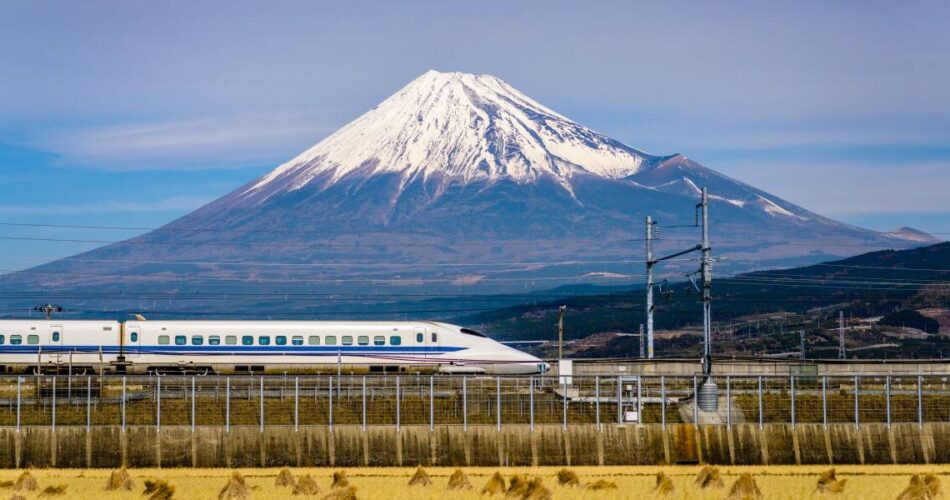American aviation regulators have banned the use of autoland at some of their country’s airports as the local debate about 5G phone mast emissions and airliners continues – while Japan claims to have solved the problem a year ago.
This morning Emirates, the UAE state airline, declared it was suspending flights to nine US airports as mobile network operators in the States said they were suspending their planned switch-on of 5G services. It follows Japan’s All Nippon Airways (ANA), Japan Airlines and Air India, according to the Daily Mail.
Yet in Japan itself the solution was straightforward, with local scientists telling the International Civil Aviation Organisation last year: “To avoid the blocking of radio altimeters, the location of the high-power 5G base station should be avoided within 200m from the approaching route of aircraft.”
In the US things are rather different, however.
“Boeing has announced flight restrictions on all airlines operating the Boeing 777 aircraft, and we have cancelled or changed the aircraft for some flights to/from the US based on the announcement by Boeing,” an ANA spokesman told the Mail. We have asked Boeing for comment.
The US-specific problem occurs because the so-called C-band of frequencies set aside for 5G by spectrum regulators is closer to a safety-critical aviation band than in the rest of the world, as previously reported. US aviation trade unions and the Federal Aviation Administration (FAA), the sector’s safety regulator, fear that radio emissions at the top of the C-band’s 3.98GHz frequency could bleed over into the 4.2-4.4GHz band used by airliners’ radio altimeters.
Disrupting radio altimeters potentially prohibits the use of automatic landing capabilities, as used during bad weather when pilots can’t see the airport.
The Reuters newswire reported this morning that Verizon and AT&T will not switch on 5G services at some base stations near airports, though others have reportedly been flashed up already.
Meanwhile The Drive, a car news website with an aviation ‘n’ military side hustle, reported an airline pilot as saying: “We will be limited to Category 1 approaches… Cities such as Seattle, Eugene, Portland, San Francisco, and Spokane, which are notorious for low visibility and low ceilings will experience days of interrupted travel.”
Meanwhile, in Japan
Mobile market analyst John Strand of Strand Consulting claimed in a briefing note issued today that the dispute is all about who pays for radio altimeter upgrades to conclusively exclude 5G interference, accusing the FAA of not carrying out proper testing to validate its precautionary principle-driven bans on radalt-dependent approaches being flown by airliners.
“Instead,” wrote Strand, “the FAA has colluded with various aviation trade associations (pilots, airlines, and aircraft) in the hope that they can get the mobile industry to cough up $100m or so to pay for altimeter upgrades.”
No source was given for the $100m figure. Strand compared the US situation with Japan, though erroneously claimed the Japanese 5G spectrum allocation overlaps the lower end of the radio altimeters band. NTT Review, a technical magazine produced by local telco NTT Docomo, stated the relevant Japanese 5G allocations are 3.6-4.1GHz and 4.5-4.6GHz. These are closer to the radio altimeter band (4.2-4.4GHz) than in the US, yet there hasn’t been a similar outcry from Japan about 5G interference with airliners.
As Gartner analyst Bill Ray previously pointed out to The Register, the question is whether radio altimeters’ RF filters are good enough to exclude bleed-through interference from 5G transmitters. To that end, local studies in Japan appear to have found a solution to the problem: don’t build masts under runway approach paths and make sure there’s enough guard band (unused spectrum) in between the frequencies in use.
Japan’s Electronic Navigation Research Institute (ENRI) published a study (.docx, 21 pages) on 5G interference with radio altimeters and submitted its findings to the International Civil Aviation Organisation in March last year. Its practical tests included experiments carried out on Rockwell Collins and Honeywell radio altimeters, both companies being major suppliers to airframers such as Boeing and Airbus.
“In the last evaluation we need at least 60MHz of [guard band] to avoid the blocking to the radio altimeters,” said ENRI, adding: “400m of separation distance from the point beneath the aircraft might be needed to make the compatibility in case of the maximum envelope pattern.”
The Japanese scientists made their finding after ensuring beam-forming antennas were pointed earthwards so the centre of directional high-power pulses can never be transmitted above the horizontal.
All these findings support UK and EU regulators’ stances on 5G and airliners, which is broadly “no problems seen, no problems anticipated.” Their US colleagues ought to be taking notes from the rest of the world. ®
Source link



